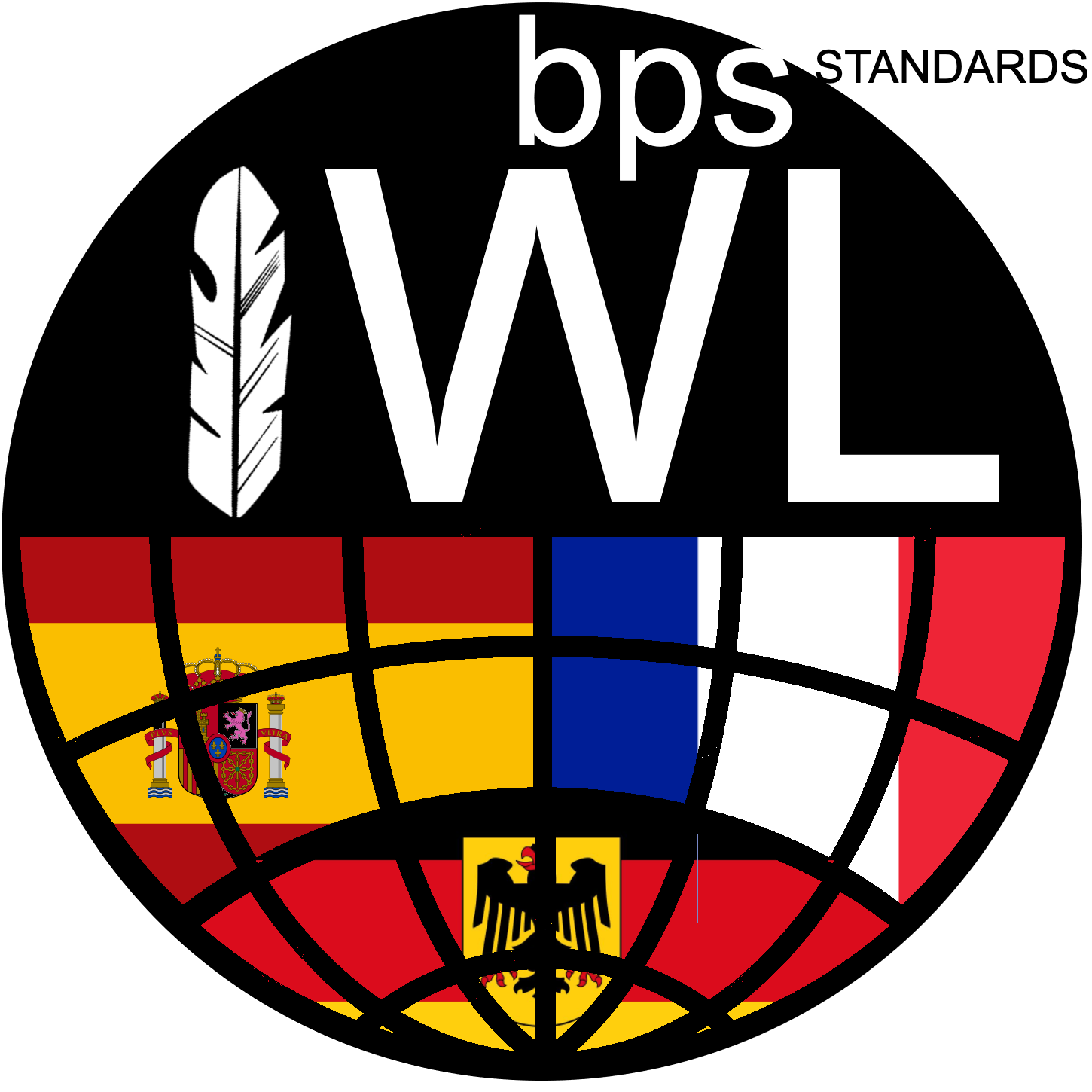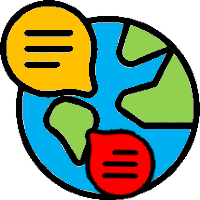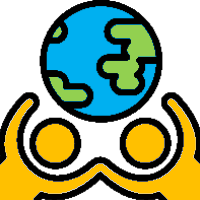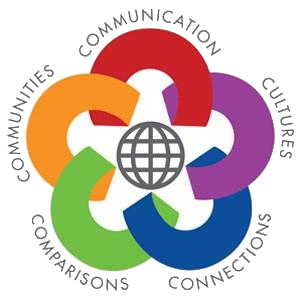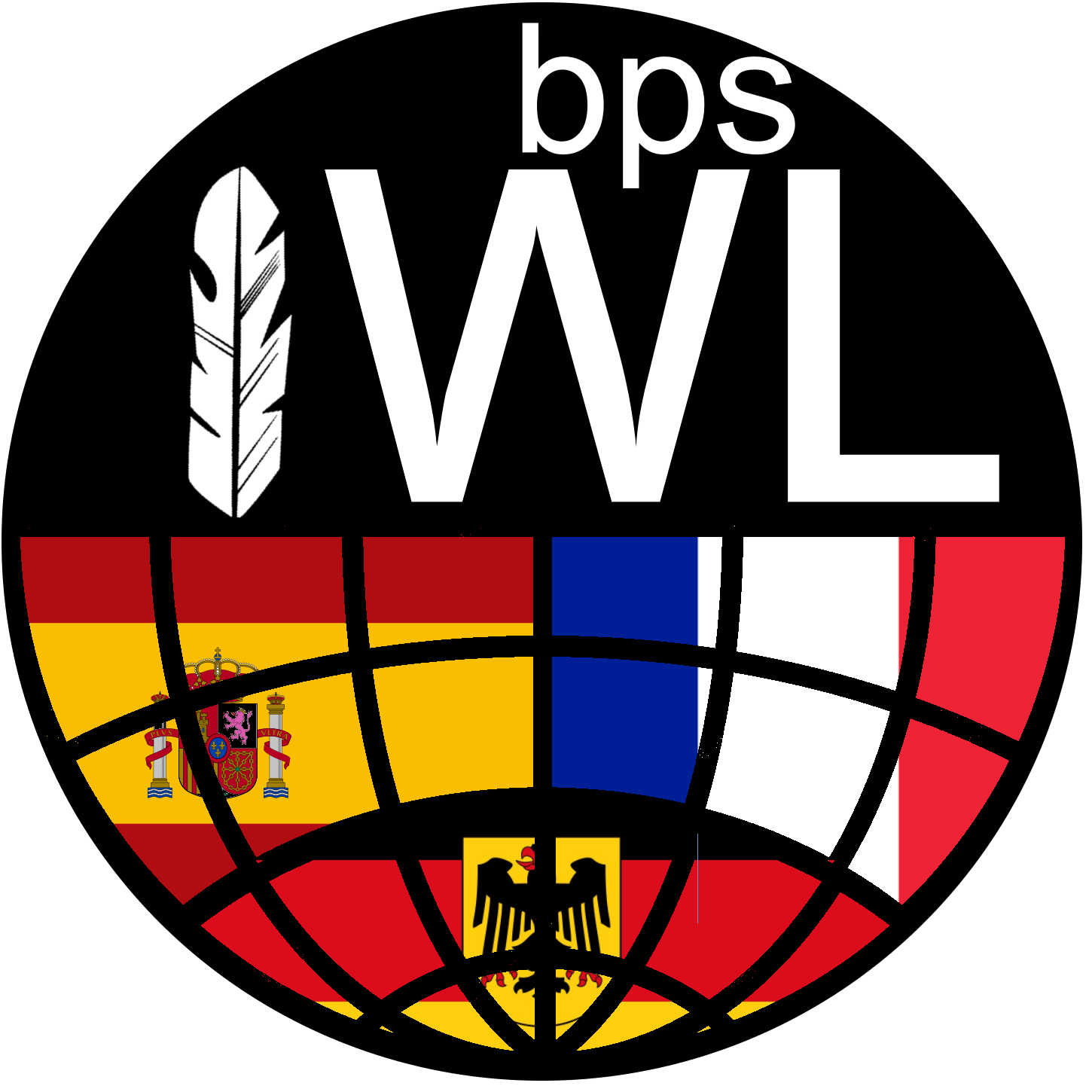BPS District Indigenous and World Language Standards Book
| Site: | Learnbps |
| Class: | BPSS (IWL) Indigenous and World Languages Standards |
| Book: | BPS District Indigenous and World Language Standards Book |
| Printed by: | Guest user |
| Date: | Tuesday, December 16, 2025, 4:05 AM |
Introduction
The BPS-S (IWL) Indigenous and World Language Standards course in Learnbps is
Bismarck Public School District's current progress on prioritizing and deconstructing standards to provide a consistent, clear understanding of what students are expected to learn. The standards are designed to provide guidance so teachers and parents
know what they need to do to help students. Plus help students reflect on the knowledge and skills that they need for success.
Identifier Explanation
IWL-HS.G1.03
The Bismarck Public School District Standards-Based Progress Report displays grades at the concept level. Therefore Bismarck Public School District has modified the North Dakota DPI Identifiers to fit into our student information system PowerSchool for Standards-Based grading. Above is a BPS-Standards IWL identifier with smaller muted text showing the addition to the identifier that are the components that BPS adds to the State code.
IWL-HS.G1.03
click on the identifier components for more explanations
IWL-HS.G1.03 Presentational Communication Learners present information, concepts, and ideas to various audiences of listeners, readers, and viewers.
Note how the identifiers auto-link to the standards global glossaries.
1.3
click on the identifier components for more explanations
1.3 Presentational Communication Learners present information, concepts, and ideas to various audiences of listeners, readers, and viewers. (State individual grade-specific standards can be identified by their Goal, Standard, and Competencies.)
Global (IWL-HS) Standards Glossary 
Grade Levels
![]() Middle School
Middle School
(IWL-MS) Standards Glossary
Courses:
- (7581, 8581) Spanish Exploratory 7-8
- (7583, 8583) German Exploratory 7-8
- (7585, 8585) French Exploratory 7-8
- (7587, 8587) Latin Exploratory 7-8
Middle School
![]() The goal of the World Language program is to prepare students to communicate effectively with speakers of a different language.
The goal of the World Language program is to prepare students to communicate effectively with speakers of a different language.
IWL-HS.G1 Goal 1:
 Communications
Communications
Communicate effectively in more than one language to function in a variety of situations
Interpersonal Communication is spontaneous, unrehearsed, two-way communication through listening, speaking, reading, signing, facial expressions, and body language in the
target language such as texting, conversation, letters, etc. Both parties negotiate meaning and ask for clarification. The learner will understand and will also be understood.
IWL-MS.G1.01 Learners interact effectively with spoken, signed, or written exchanges sharing information, reactions, feelings, and opinions.
Interpretive Communication is one-way communication through listening, reading, or viewing in which the learner engages with a variety of print and non-print materials, including
multimedia, visual actions, and images that convey meaning. The learner will extract meaning and use the information for personal or community enrichment.
IWL-MS.G1.02 Learners understand, interpret, and analyze what is heard, read, or viewed on a variety of topics.
Presentational Communication is the polished, edited, rehearsed, or impromptu presentation of information in the target language such as presenting original skits, practiced
speeches, written or oral stories, essays, etc. The learner will present information to an audience of readers, listeners, or viewers.
IWL-MS.G1.03 Learners present information, concepts, and ideas to various audiences of listeners, readers, and viewers.
IWL-MS.G2 Goal 2:
 Cultures
Cultures
Interact with cultural competence and understanding.
The study of additional languages enables learners to understand and interact appropriately with related cultures.
Therefore, learners need to develop an awareness of cultures, and their patterns of social interactions (practices), tangible and intangible contributions (products), and the attitudes and views of the world behind both (perspectives). Understanding additional cultures often results in empathy and greater self-awareness. Learners need to understand relationships among products, practices, and perspectives and how they relate to the learner's own culture, customs, and traditions.
Relating Cultural Practices to Perspectives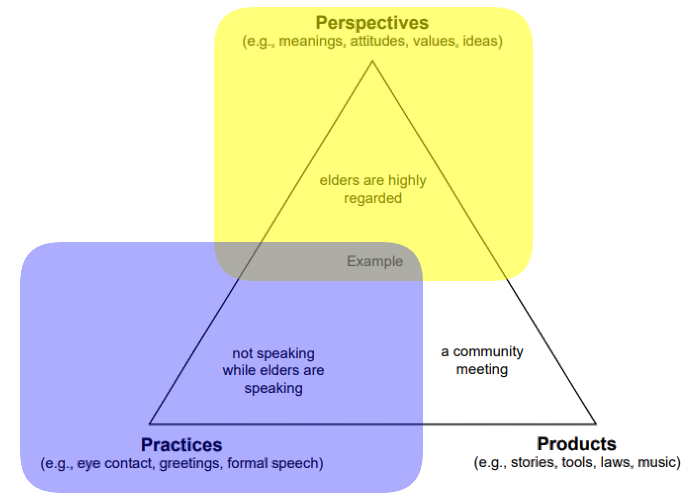
IWL-MS.G2.01 Learners investigate, explain, and reflect on the relationship of practices to the customs, traditions, and perspectives of the cultures studied
- IWL-MS.G2.01.a Identify language and behaviors that are appropriate to the cultures studied.
- IWL-MS.G2.01.b Identify the relationship of the practices to the customs, traditions, and perspectives of the cultures studied using the language.
- IWL-MS.G2.01.c Identify some commonly held generalizations about the cultures studied.
Relating Cultural Products to Perspectives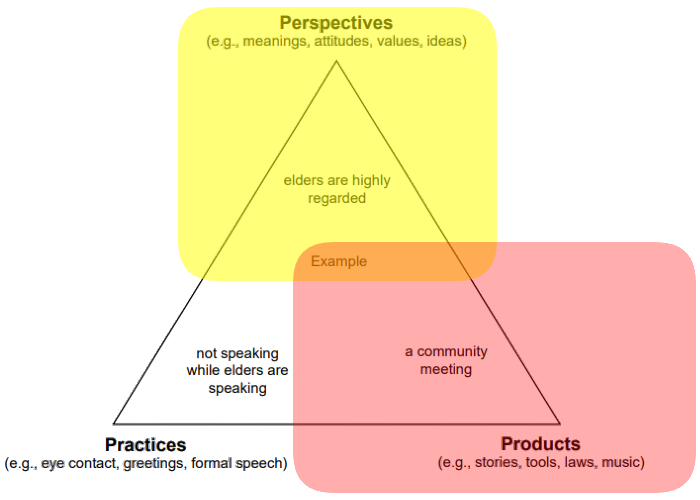
IWL-MS.G2.02 Learners investigate, explain, and reflect on the relationship of products to the customs, traditions, and perspectives of the cultures studied.
- IWL-MS.G2.02.a Identify the relationship of the products to the customs, traditions, and perspectives of the cultures studied using the language.
IWL-MS.G3 Goal 3:
 Connections
Connections
Connect with other disciplines and acquire information and diverse perspectives to apply the language in academic and career-related situations
The study of languages provides multiple opportunities to connect with other disciplines either formally or informally, thereby expanding the educational experiences of all learners.
It benefits their growth in other disciplines and encourages the transfer, enrichment and strengthening of information. The learners' access to information and diverse perspectives through the use of another language and culture increases their abilities in both academic and career-related settings
Making Connections
IWL-MS.G3.01 Learners build, reinforce, and expand their knowledge of other disciplines while using the language to develop critical thinking, creativity, collaboration, and problem-solving skills.
- IWL-MS.G3.01.a Connect information and skills from other content areas to experiences related to the target language and cultures.
- IWL-MS.G3.01.b Reinforce and expand knowledge of authentic target language sources for use in other content areas..
Acquiring Information and Diverse Perspectives
IWL-MS.G3.02 Learners access, evaluate, and reflect upon diverse perspectives and information available through the language and its cultures.
- IWL-MS.G3.02.a Identify and examine information acquired from authentic target language sources in the classroom and beyond.
- IWL-MS.G3.02.b Access authentic sources and the diverse perspectives of the target language and cultures.
IWL-MS.G4 Goal 4:
 Comparisons
Comparisons
Develop insight into the nature of language and culture to interact with cultural competence.
Experiencing a second language increases a learner's ability to reflect on their first language. Language Comparisons focus on the impact of learning linguistic elements of a new language and develop the ability to examine their own language. Cultural Comparisons help learners gain a deeper understanding of cultures and how they are similar to and different from their own. Learners develop both critical thinking abilities and an awareness and appreciation of alternate views.
IWL-MS.G4.01 Learners investigate, explain, and reflect on the nature of language through comparisons of two or more languages
- IWL-MS.G4.01.a Investigate and describe similarities and differences between two or more languages.
- IWL-MS.G4.01.b Identify familiar sound and structural patterns of the target language and compare to other languages.
- IWL-MS.G4.01.c Recognize idiomatic expressions among languages.
IWL-MS.G4.02 Learners investigate, explain, and reflect on the concept of culture through comparisons of two or more languages
- IWL-MS.G4.02.a Investigate and describe verbal and nonverbal behaviors among cultures.
- IWL-MS.G4.02.b Recognize and begin to compare and contrast crosscultural similarities and differences in the practices, products, and perspectives of the cultures studied.
IWL-MS.G5 Goal 5:
 Communities
Communities
Interact with and celebrate multilingual communities with cultural competence at home and around the world.
IWL-MS.G5.01 Learners investigate, explain, and reflect on the nature of language through comparisons of two or more languages
- IWL-MS.G5.01.a Interact in the target language in school and community situations.
- IWL-MS.G5.01.b Explore connections with the cultures studied using technology, media, and authentic sources.
- IWL-MS.G5.01.c Identify opportunities to use the target language within and beyond the school community.
IWL-MS.G5.02 Learners set goals and reflect on personal progress in using languages for enjoyment, enrichment, advancement, and in celebrations.
- IWL-MS.G5.02.a Set goals on personal progress for enjoyment, enrichment, advancement, and in celebrations.
- IWL-MS.G5.02.b Explore benefits and opportunities that go along with learning a target language.
IWL-MS.G5.03 Learners value and promote Indigenous, heritage, and native languages and show interest in efforts to preserve and revitalize those that are endangered through active engagement in language and cultural activities.
- IWL-MS.G5.03.a Attend intergenerational community activities pertaining to any language or culture.
- IWL-MS.G5.03.b Investigate and share information on cultural activities.
- IWL-MS.G5.03.c Interact with Indigenous, heritage, or native language users; attend presentations given by and for them.
High School
![]() The goal of the World Language program is to prepare students to communicate effectively with speakers of a different language.
The goal of the World Language program is to prepare students to communicate effectively with speakers of a different language.
IWL-HS.G1 Goal 1:
 Communications
Communications
Communicate effectively in more than one language to function in a variety of situations
Interpersonal Communication is spontaneous, unrehearsed, two-way communication through listening, speaking, reading, signing, facial expressions, and body language in the
target language such as texting, conversation, letters, etc. Both parties negotiate meaning and ask for clarification. The learner will understand and will also be understood.
IWL-HS.G1.01 Learners interact effectively with spoken, signed, or written exchanges sharing information, reactions, feelings, and opinions.
Interpretive Communication is one-way communication through listening, reading, or viewing in which the learner engages with a variety of print and non-print materials, including
multimedia, visual actions, and images that convey meaning. The learner will extract meaning and use the information for personal or community enrichment.
IWL-HS.G1.02 Learners understand, interpret, and analyze what is heard, read, or viewed on a variety of topics.
Presentational Communication is the polished, edited, rehearsed, or impromptu presentation of information in the target language such as presenting original skits, practiced
speeches, written or oral stories, essays, etc. The learner will present information to an audience of readers, listeners, or viewers.
IWL-HS.G1.03 Learners present information, concepts, and ideas to various audiences of listeners, readers, and viewers.
IWL-HS.G2 Goal 2:
 Cultures
Cultures
Interact with cultural competence and understanding.
The study of additional languages enables learners to understand and interact appropriately with related cultures.
Therefore, learners need to develop an awareness of cultures, and their patterns of social interactions (practices), tangible and intangible contributions (products), and the attitudes and views of the world behind both (perspectives). Understanding additional cultures often results in empathy and greater self-awareness. Learners need to understand relationships among products, practices, and perspectives and how they relate to the learner's own culture, customs, and traditions.
Relating Cultural Practices to Perspectives
IWL-HS.G2.01 Learners investigate, explain, and reflect on the relationship of practices to the customs, traditions, and perspectives of the cultures studied
- IWL-HS.G2.01.a Describe and analyze cultural characteristics and behaviors in everyday life.
- IWL-HS.G2.01.b Produce language and behaviors that are appropriate to the target culture.
- IWL-HS.G2.01.c Discuss issues and challenges that affect practices in the cultures studied.
- IWL-HS.G2.01.d Analyze and discuss some commonly held generalizations about the cultures studied.
Relating Cultural Products to Perspectives
IWL-HS.G2.02 Learners investigate, explain, and reflect on the relationship of products to the customs, traditions, and perspectives of the cultures studied.
- IWL-HS.G2.02.a Analyze the contributions of the cultures studied.
- IWL-HS.G2.02.b Analyze the relationship among cultural perspectives, customs, and traditions as represented in expressive forms of the cultures studied.
IWL-HS.G3 Goal 3:
 Connections
Connections
Connect with other disciplines and acquire information and diverse perspectives to apply the language in academic and career-related situations
The study of languages provides multiple opportunities to connect with other disciplines either formally or informally, thereby expanding the educational experiences of all learners.
It benefits their growth in other disciplines and encourages the transfer, enrichment and strengthening of information. The learners' access to information and diverse perspectives through the use of another language and culture increases their abilities in both academic and career-related settings
Making Connections
IWL-HS.G3.01 Learners build, reinforce, and expand their knowledge of other disciplines while using the language to develop critical thinking, creativity, collaboration, and problem-solving skills.
- IWL-HS.G3.01.a Transfer and apply information and skills from other content areas to experiences related to the target language and cultures.
- IWL-HS.G3.01.b Identify and organize authentic target language sources for use in other content areas.
Acquiring Information and Diverse Perspectives
IWL-HS.G3.02 Learners access, evaluate, and reflect upon diverse perspectives and information available through the language and its cultures.
- IWL-HS.G3.02.a Organize and incorporate information acquired from authentic target language sources in the classroom and beyond.
- IWL-HS.G3.02.b Access and evaluate authentic sources and the diverse perspectives of the target language and cultures.
IWL-HS.G4 Goal 4:
 Comparisons
Comparisons
Develop insight into the nature of language and culture to interact with cultural competence.
Experiencing a second language increases a learner's ability to reflect on their first language. Language Comparisons focus on the impact of learning linguistic elements of a new language and develop the ability to examine their own language. Cultural Comparisons help learners gain a deeper understanding of cultures and how they are similar to and different from their own. Learners develop both critical thinking abilities and an awareness and appreciation of alternate views.
IWL-HS.G4.01 Learners investigate, explain, and reflect on the nature of language through comparisons of two or more languages
- IWL-HS.G4.01.a Explain similarities and differences between two or more languages
- IWL-HS.G4.01.b Apply familiar sound and structural patterns of the target language and compare to other languages
- IWL-HS.G4.01.c Compare and contrast idiomatic expressions among languages
IWL-HS.G4.02 Learners investigate, explain, and reflect on the concept of culture through comparisons of two or more languages
- IWL-HS.G4.02.a Summarize and explain the similarities and differences in verbal and nonverbal behaviors among cultures
- IWL-HS.G4.02.b Recognize, compare, and contrast cross-cultural similarities and differences in the practices, products, and perspectives of the cultures studied
IWL-HS.G5 Goal 5:
 Communities
Communities
Interact with and celebrate multilingual communities with cultural competence at home and around the world.
IWL-HS.G5.01 Learners investigate, explain, and reflect on the nature of language through comparisons of two or more languages
- IWL-HS.G5.01.a Interact and collaborate in the target language in school and community situations.
- IWL-HS.G5.01.b Establish connections with the cultures studied using technology, media, and authentic sources.
- IWL-HS.G5.01.c Participate in opportunities to use the target language within and beyond the school community.
IWL-HS.G5.02 Learners set goals and reflect on personal progress in using languages for enjoyment, enrichment, advancement, and in celebrations.
- IWL-HS.G5.02.a Regularly self-assess goals on the progress made and material learned, and then set new goals.
- IWL-HS.G5.02.b Investigate benefits and opportunities that go along with learning the target language.
- IWL-HS.G5.02.c Use various media in the target language.
IWL-HS.G5.03 Learners value and promote Indigenous, heritage, and native languages and show interest in efforts to preserve and revitalize those that are endangered through active engagement in language and cultural activities.
- IWL-HS.G5.03.a Participate in intergenerational community events pertaining to any language and culture.
- IWL-HS.G5.03.b Participate in events that celebrate languages and cultures.
- IWL-HS.G5.03.c Interact and engage in dialogue with Indigenous, heritage, or native language users.
1: Communication
Communicate effectively in more than one language to function in a variety of situations.
Effective communication is vital in learning another language. The three main areas within communication that need to be addressed are interpersonal, interpretive, and presentational.
Interpersonal Communication is spontaneous, unrehearsed, two-way communication through listening, speaking, reading, signing, facial expressions, and body language in the target language such as texting, conversation, letters, etc. Both parties negotiate meaning and ask for clarification. The learner will understand and will also be understood.
Interpretive Communication is one-way communication through listening, reading, or viewing in which the learner engages with a variety of print and non-print materials, including multimedia, visual actions, and images that convey meaning. The learner will extract meaning and use the information for personal or community enrichment.
Presentational Communication is the polished, edited, rehearsed, or impromptu presentation of information in the target language such as presenting original skits, practiced speeches, written or oral stories, essays, etc. The learner will present information to an audience of readers, listeners, or viewers.
Standards
-
IWL-MS.G1 Goal 1 - Communication
- IWL-MS.G1.01 Learners interact effectively with spoken, signed, or written exchanges sharing information, reactions, feelings, and opinions.
- IWL-MS.G1.02 Learners understand, interpret, and analyze what is heard, read, or viewed on a variety of topics.
- IWL-MS.G1.03 Learners present information, concepts, and ideas to various audiences of listeners, readers, and viewers.
-
IWL-HS.G1 Goal 1 - Communication
- IWL-HS.G1.01 Learners interact effectively with spoken, signed, or written exchanges sharing information, reactions, feelings, and opinions.
- IWL-HS.G1.02 Learners understand, interpret, and analyze what is heard, read, or viewed on a variety of topics.
- IWL-HS.G1.03 Learners present information, concepts, and ideas to various audiences of listeners, readers, and viewers.
2: Culture
Interact with cultural competence and understanding.
Description
The study of additional languages enables learners to understand and interact appropriately with related cultures.
Therefore, learners need to develop an awareness of cultures, and their patterns of social interactions (practices), tangible and intangible contributions (products), and the attitudes and views of the world behind both (perspectives). Understanding additional cultures often results in empathy and greater self-awareness. Learners need to understand relationships among products, practices, and perspectives and how they relate to the learner's own culture, customs, and traditions.
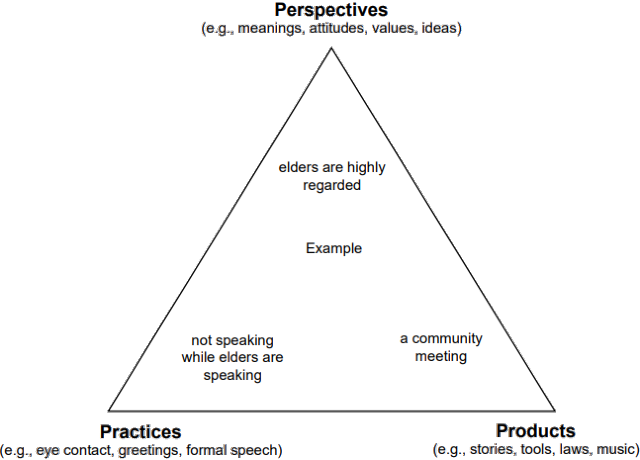
Standards
Column MS
Column HS
3: Connections
Connect with other disciplines and acquire information and diverse perspectives to apply the language in academic and career-related situations.
The study of languages provides multiple opportunities to connect with other disciplines either formally or informally, thereby expanding the educational experiences of all learners. It benefits their growth in other disciplines and encourages the transfer, enrichment and strengthening of information. The learners' access to information and diverse perspectives through the use of another language and culture increases their abilities in both academic and career-related settings.
Standards
Column MS
Column HS
4: Comparisons
Develop insight into the nature of language and culture to interact with cultural competence.
Experiencing a second language increases a learner's ability to reflect on their first language. Language Comparisons focus on the impact of learning linguistic elements of a new language and develop the ability to examine their own language. Cultural Comparisons help learners gain a deeper understanding of cultures and how they are similar to and different from their own. Learners develop both critical thinking abilities and an awareness and appreciation of alternate views.
Standards
-
IWL-MS.G4 Goal 4 - Comparisons
- IWL-MS.G4.01 Language Comparisons
Learners investigate, explain, and reflect on the nature of language through comparisons of two or more languages
- IWL-MS.G4.01.a Explain similarities and differences between two or more languages
- IWL-MS.G4.01.b Apply familiar sound and structural patterns of the target language and compare to other languages
- IWL-MS.G4.01.c Compare and contrast idiomatic expressions among languages
- IWL-MS.G4.02 Cultural Comparisons
Learners investigate, explain, and reflect on the concept of culture through comparisons of two or more languages
- IWL-MS.G4.02.a Summarize and explain the similarities and differences in verbal and nonverbal behaviors among cultures
- IWL-MS.G4.02.b Recognize, compare, and contrast cross-cultural similarities and differences in the practices, products, and perspectives of the cultures studied
-
IWL-HS.G4 Goal 4 - Comparisons
- IWL_HS.G4.01 Language Comparisons
Learners investigate, explain, and reflect on the nature of language through comparisons of two or more languages
- IWL_HS.G4.01.a Explain similarities and differences between two or more languages
- IWL_HS.G4.01.b Apply familiar sound and structural patterns of the target language and compare to other languages
- IWL_HS.G4.01.c Compare and contrast idiomatic expressions among languages
- IWL-HS.G4.02 Cultural Comparisons
Learners investigate, explain, and reflect on the concept of culture through comparisons of two or more languages
- IWL_HS.G4.02.a Summarize and explain the similarities and differences in verbal and nonverbal behaviors among cultures
- IWL_HS.G4.02.b Recognize, compare, and contrast cross-cultural similarities and differences in the practices, products, and perspectives of the cultures studied
5: Communities
Interact with and celebrate multilingual communities with cultural competence at home and around the world.
The study of additional languages enables students to recognize the interdependence of familial, local, state, national, and international communities.
As lifelong learners, engagement with communities expands opportunities professionally, socially, and personally. Learners' experiences with multiple communities prepare them to adapt to the perpetual changes of language and
community. Meaningful experiences with language through community participation allow learners to understand, appreciate, and celebrate the value of additional languages and cultures.
Standards
- IWL-MS.G5.01 School and Community
- IWL-MS.G5.01.a Interact in the target language in school and community situations.
- IWL-MS.G5.01.b Explore connections with the cultures studied using technology, media, and authentic sources.
- IWL-MS.G5.01.c Identify opportunities to use the target language within and beyond the school community.
- IWL-MS.G5.02 Lifelong Learner
- IWL-MS.G5.02.a Set goals on personal progress for enjoyment, enrichment, advancement, and in celebrations.
- IWL-MS.G5.02.b Explore benefits and opportunities that go along with learning a target language.
- IWL-MS.G5.03 Value and Celebrate Communities and Languages
- IWL-MS.G5.03.a Attend intergenerational community activities pertaining to any language or culture.
- IWL-MS.G5.03.b Investigate and share information on cultural activities.
- IWL-MS.G5.03.c Interact with Indigenous, heritage, or native language users; attend presentations given by and for them.
- IWL_HS.G5.01 School and Community
- IWL_HS.G5.01.a Interact and collaborate in the target language in school and community situations.
- IWL_HS.G5.01.b Establish connections with the cultures studied using technology, media, and authentic sources.
- IWL_HS.G5.01.c Participate in opportunities to use the target language within and beyond the school community.
- IWL_HS.G5.02 Lifelong Learner
- IWL_HS.G5.02.a Regularly self-assess goals on the progress made and material learned, and then set new goals.
- IWL_HS.G5.02.b Investigate benefits and opportunities that go along with learning the target language.
- IWL_HS.G5.02.c Use various media in the target language.
- IWL_HS.G5.03 Value and Celebrate Communities and Languages
- IWL_HS.G5.03.a Participate in intergenerational community events pertaining to any language and culture.
- IWL_HS.G5.03.b Participate in events that celebrate languages and cultures.
- IWL_HS.G5.03.c Interact and engage in dialogue with Indigenous, heritage, or native language users.
